
At a time when vehicle diagnostics can demand a computer science degree, being able to get some insight into your engine health with nothing but a rag and a bit of know-how can be downright refreshing. Beyond that, it turns out that the humble dipstick tucked inside your engine bay has a lot to say -- or at least it does if you know what you're looking for.
First, however, you need to know how checking your oil is done and what to look for, even if you're already vaguely aware that the process involves
equal amounts of wiping oil and nodding knowingly as you squint your eyes. Let's walk you through how to check your oil the right way and then talk about some reasons yours might be sitting on the low side of those little hash marks.
Of course, all of this assumes that your new car actually came with a dipstick in the first place. Assuming that you do, let's begin.
Read more: These V6 Engines Put The LS1 V8 To Shame
Why You Need To Check Your Oil

Oil has come a long way over the decades, but it's also one of those things that remains almost shocking in just how much the general concept has remained unchanged. Regardless of price or fancy additives, the job that your oil needs to do has remained the same since the days of the Model T: lubricate, clean, and protect.
Friction kills motors, so keeping those high speed metal surfaces slippery is the name of the game, whether you're headed out for groceries or taking a lap at Le Mans. Aside from that, your oil is constantly trapping tiny contaminants that would otherwise gravitate to critical engine components. All this protects your engine -- and thus your car -- every time you fire it up.
As a result, clean, healthy oil filled to the correct level not only gives your vehicle its best shot at running smoothly, it can also give you early warning signs that something might be amiss. In fact, these warning signs might often appear long before that cryptic check engine light pops on.
Don't I Have Gauges For This?
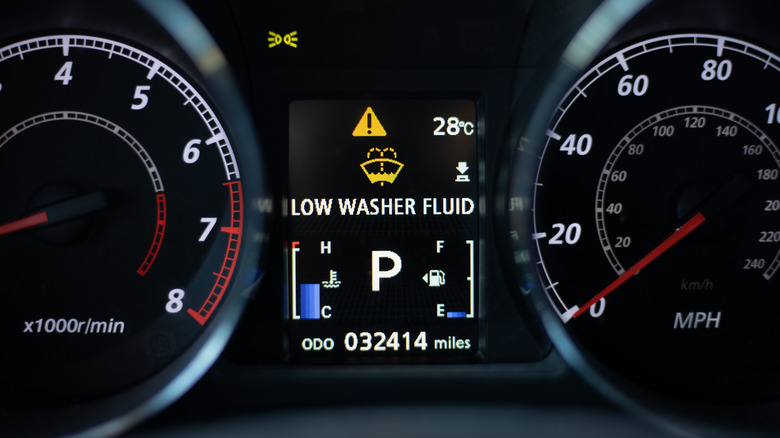
Modern cars can show you all sorts of info in the gauge cluster, from battery voltage to exactly how long before your satellite radio trial ends and they start robocalling you for a credit card number. However, sometimes those are digital approximations at best, as many -- including the universally feared check engine light -- only bother to alert you with a flash or a beep after damage is already underway.
Well, except for that timer for your satellite radio. Those have always been pretty precise.
Checking your oil with a dipstick can both clue you in on information that the gauges just can't capture while also helping you establish a more personal connection between yourself and your vehicle. That's not a joke, by the way -- this is a relationship of trust and understanding that will benefit both you and the car.
Getting Started: Here's How To Check Your Oil

If you're going to make sure the brown stuff is at its best and your engine is running the way it should, you're going to need some things. Fortunately, it isn't much -- some flat ground, a clean rag, and a general idea of where to find your dipstick.
Probably the most controversial aspect of this whole operation is what your engine temperature should be when checking oil. While this does matter, the nuances aren't anywhere near as important as the automotive nerds you'll find arguing on the internet will make it out to be. Your engine shouldn't be cold, meaning that it should have been running before you get started, and it shouldn't be hot, either. So either idle a bit first or give it 10 minutes to cool down if you've been out driving. It's basically the same rules that apply to engine temperatures for an oil change.
The other important thing to note before you pop the hood is that you want to be on flat ground. Oil isn't exempt from gravity, so being tilted in one direction or the other, even a little bit, can throw off the reading you're about to do.
Pop The Hood, Find Your Dipstick
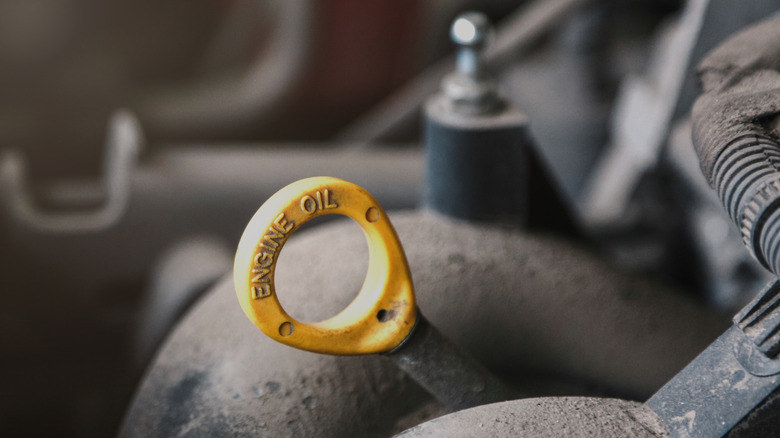
Okay, time to get down to business. You're parked in a vaguely flat spot with a warm-ish engine that's now turned off, and you have a rag or rag equivalent somewhere within reach. Pop the hood.
Next, fumble with the hood latch in an attempt to make it look effortless. Your manufacturer may vary, but it can actually be kind of a pain to find the little lever in there and there's no shame in kneeling down to look. Hood latches can be finicky.
Once your hood is open and safely propped up, go ahead and find your dipstick. Manufacturers generally put some amount of effort into making it easy to find and reach, so start looking along the front of the engine or off to one side. It's probably a fairly bright color so it should jump right out at you. If not -- well, it's probably time to get out the owner's manual.
Once you've found it, take a firm grip and pull it out. You should feel a little bit like King Arthur.
Get Dipping

You should now be holding your dipstick, perhaps triumphantly. Still have your rag? It's time for that now. Carefully wipe any excess oil from the dipstick. Take note of the little markings on the very end. They might be hard to see, but you'll need them later.
Next you're going to simply reinsert the dipstick all the way back to where you found it, and then pull it back out to capture your reading. Get ready to squint a little. This is as close as you're going to get to a tricky part. As you prepare to read the dipstick you'll need to move slowly, avoid banging it into anything, and support the dipstick so you aren't flinging drops of oil or messing up the reading down there on the end.
In the best light you can find without wandering too far, see where the wet stuff ends and decide if you're in between the lines marked for optimal oil level. Your owner's manual might have a thing or two to say about this part, too, so if you've already got it handy you might take another look.
How Much Oil Should Be On The Dipstick?
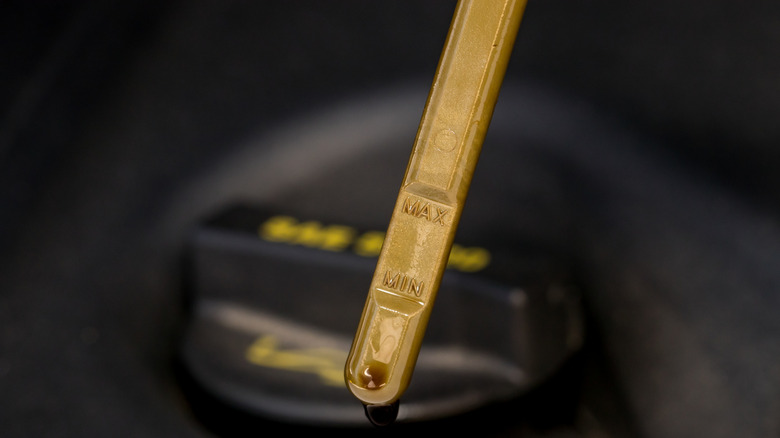
Checking the oil level --which we should note tells you nothing about oil quality -- is refreshingly simple. If you're between the dots on the dipstick, you're probably good.
If you're reading low, you're definitely going to want to put some effort into finding the cause, but for now you just need to add some oil. In most vehicles, the difference between the min line and the max line is about a quart, so use your judgment in adding more. Also be sure to use the right oil specification for your vehicle, which you can find in your owner's manual or on the little sticker from the quick lube place. You can do this by pouring right into the clearly marked oil cap under the hood and, no, it isn't the end of the world if you add oil to a hot engine.
Don't spill if you can help it and again, when in doubt, let your owner's manual be your guide. You know -- because it's a guide.
What Should My Oil Look Like?
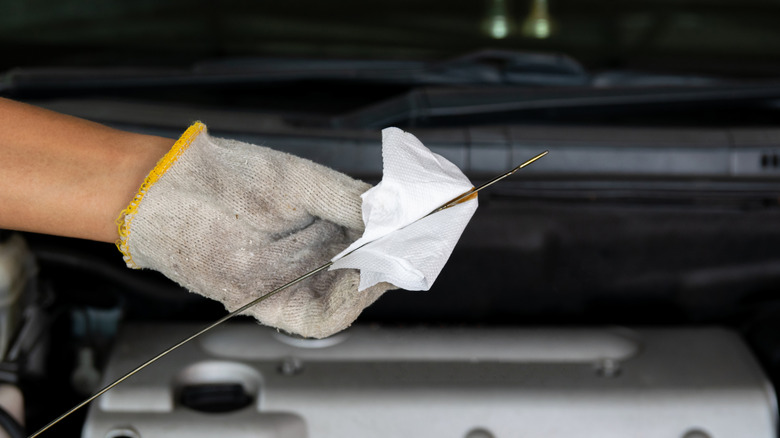
So far, everything has been pretty black and white. Your oil is either there or it isn't. The level is between the lines or it's not. However, there's more to evaluating your oil than just checking the level. Healthy oil will be slightly translucent, amber in color, and smooth. Oil that's dark, gritty, or milky means that something is amiss.
If anything in that amiss category sounds like your oil, you need to take action. Perhaps there's a problem going on mechanically that you'll need to address, or maybe you just pushed the limits of your oil change intervals a bit too far. If you think it's the latter, then getting an oil change ASAP and scolding yourself appropriately might be all you need to do.
If you're still within your oil change window, though, and things aren't looking right, it's time to dig deeper or tag in a mechanic before serious damage occurs.
Oil Level Low? 3 Common Reasons Your Oil Level Might Be Dropping Fast

If you're checking your oil regularly, the issue that you're most likely to spot is a low oil level overall. Here are some things that might cause a reading on the low end of the dipstick. Common reason one? Normal oil consumption. Yes, it's a thing -- some vehicles just eat up a bit of oil, even on a good day. Check your owner's manual for acceptable tolerances.
In many cases, the only response necessary is for you to keep an eye on your levels and to top off accordingly. Whether it's a newer model that just drinks a bit of oil or an older one that you're going to chalk up to idiosyncratic charm, this might just be part of getting to know your vehicle and meeting its needs accordingly. The good news is that at this point we're talking about more of a quirk than a bona fide problem. Just pick up a quart sometimes or start a tidy row of them in the garage.
Sometimes, however, your car really is guzzling oil. In that case, you might have to dig a bit deeper.
Common Reason Two: Worn Rings Or Valve Seals

Normal engine wear can let oil seep into combustion chambers and burn off quite quickly. You don't want to let this go.
If something like this is going on, there's a good chance that there are other symptoms happening at the same time. In addition to a low oil level, you might see (or smell) some bluish smoke or feel the engine running a bit rough. Trust your nose, drive with the radio off to really hear how the motor is running, and check for that blue haze coming out of your exhaust pipe or from under the hood. These can all reveal hints that your low oil level might be traced back to those pesky rings or seals.
This is not the kind of thing that you manage only by adding oil and sooner or later that approach will cost you a doozy of a mechanic's bill. However, if you're proactive, this is potentially not a huge deal to correct, so it's important that you get on it as soon as you can.
Common Reason Three: Leaks Happen. Here Are Common Culprits.

Your parking spot might have noticed this before your dipstick did, but there are all sorts of gaskets and seals that can let your oil find its way to freedom. Like a water spot in your ceiling at home, this isn't always an easy diagnosis, so it'll just depend on what's going on and where your rogue drips happen to flow.
If you do have staining on the pavement, your drips are obviously making it all the way to the ground. From below you might be able to spot what's going on -- think valve cover gasket, oil pan, timing cover, rear main seal, or really any place that two engine components come together.
Sometimes, though, those drips will run along engine bay parts, burn off on a hot surface, or otherwise make it tricky to figure out exactly what's going on. This might be where you try your shop, who might have better luck with a lift or by using dyes and other techniques that can help narrow down the issue.
Wait, What? What It Means If Your Oil Level Is High
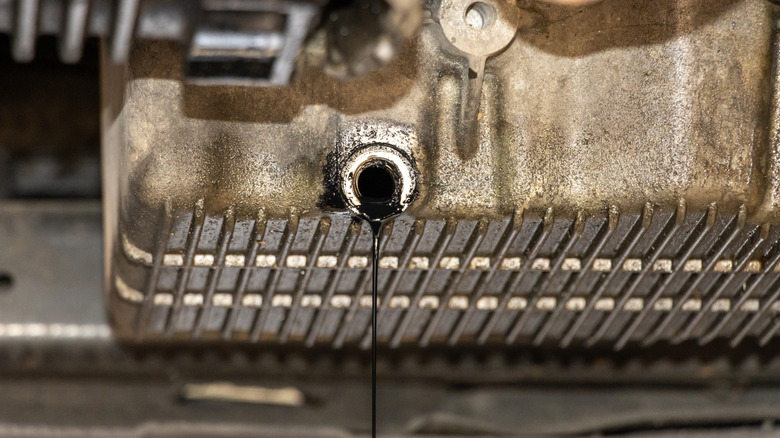
You always hear about low oil levels, but what if there's actually too much in there? That's not great, either. In fact, having too much oil in the vehicle can cause just as serious a problem as having too little. Sound like a stretch? Picture your crankshaft spinning its way through excess oil until it froths up like a nonfat almond milk latte and loses all ability to properly lubricate. This ends badly for everyone.
The most common cause of excess oil, while annoying, is at least simple enough -- someone screwed up. Maybe you just had an oil change and the outgoing oil wasn't drained completely or too much of the new stuff was added at the end. It happens. Alternatively, you might have done a poor job checking your oil recently and added too much yourself, though we'd like to think we taught you better than that. In any case, the solution is usually simple -- just drain some off and move on with your life.
A less rosy picture, and one that's going to require some maintenance, is that fuel or coolant could be contaminating your oil supply, meaning that you don't exactly have too much oil, but rather too much...something. It's a bad sign regardless, so get that checked out right away.
Start Today
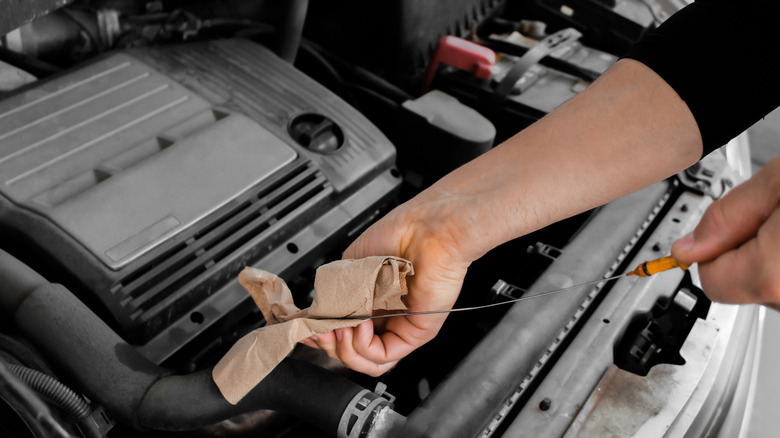
So there you have it. The basics of checking your oil and some gentle fear-mongering about what can happen if you don't.
You don't have to be a proper wrench to know the basics and getting into the routine of checking your oil regularly can save you big in terms of both money and heartache as you start to develop a sense of what's normal, what's not, and what needs attention. It's the kind of thing you can do once a month or maybe once a fillup, but the best oil check cadence is whichever one you'll remember to do. Besides, there's something satisfying about wiping off that dipstick and getting more in tune with the lifeblood of your vehicle. Normalize checking your oil before dipsticks go the way of the window crank.
Now go park someplace flat and pop the hood, because there's no time like the present to make it a habit.
Want more like this? Join the Jalopnik newsletter to get the latest auto news sent straight to your inbox...
Read the original article on Jalopnik.












